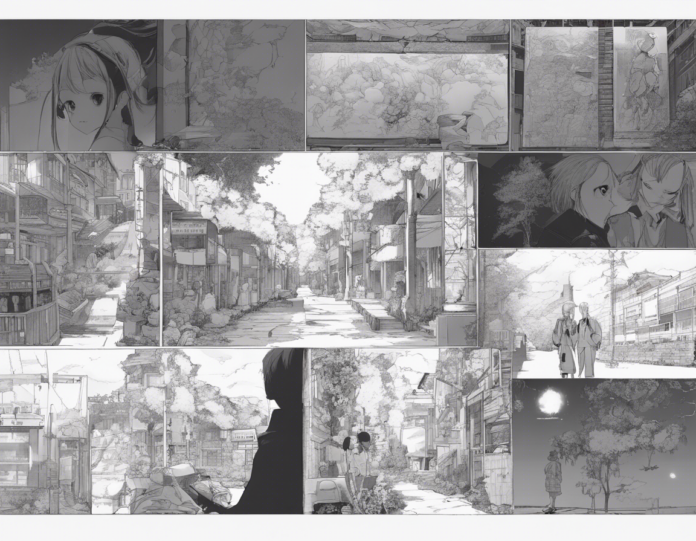Introduction
Japanese bondage manga, also known as "Kinbaku" or "shibari" manga, is a unique and captivating genre within the world of manga and anime. It combines elements of art, erotica, and storytelling that have fascinated readers around the globe. In this comprehensive guide, we will delve into the world of Japanese bondage manga, exploring its history, themes, artistic techniques, and notable works.
History of Japanese Bondage Manga
Japanese bondage has a rich history that dates back centuries, originating from the ancient art of "hojojutsu," which was used by samurai to restrain prisoners. In the modern context, the practice of bondage evolved into an aesthetic form known as "Kinbaku" or "shibari," which emphasizes the artistic and erotic aspects of tying intricate patterns with ropes around the body.
Themes in Japanese Bondage Manga
Japanese bondage manga often explores themes of power dynamics, trust, control, and vulnerability. The intricate ties and knots symbolize the complex relationships between the characters, with the rope artist (often depicted as a dominant figure) guiding the submissive character through a journey of self-discovery and surrender. These themes are often interwoven with elements of romance, suspense, and psychological exploration.
Artistic Techniques in Japanese Bondage Manga
One of the defining features of Japanese bondage manga is its emphasis on detailed and intricate rope patterns. Artists use carefully drawn illustrations to depict the process of tying and untying knots, showcasing the beauty and complexity of the art form. Through skillful use of light, shadow, and perspective, manga artists bring out the sensuality and emotion of the scenes, creating a visually stunning experience for the readers.
Notable Works in Japanese Bondage Manga
Several manga series have gained popularity for their exploration of Japanese bondage themes. One of the most well-known titles is "Nana to Kaoru" by Ryuta Amazume, which follows the relationship between two high school students who explore bondage practices together. Other notable works include "Bondage Fairies" by Kondom, a fantasy series featuring fairy characters in bondage scenarios, and "Kinbaku" by Hajime Kinoko, a collection of illustrations showcasing intricate rope patterns.
Impact and Influence of Japanese Bondage Manga
Japanese bondage manga has had a significant impact on popular culture, influencing not only other manga and anime series but also contemporary art, fashion, and photography. The themes and aesthetics of bondage have been embraced by artists and designers around the world, leading to a renaissance of interest in the art of shibari. Additionally, the genre has sparked discussions about consent, empowerment, and the boundaries of erotic expression, contributing to a broader conversation about sexuality and representation in media.
FAQs (Frequently Asked Questions)
Q: Is Japanese bondage manga suitable for all audiences?
A: Japanese bondage manga often contains explicit content and themes of a sexual nature, so it is recommended for mature readers who are comfortable with adult themes.
Q: How is Japanese bondage manga different from Western BDSM comics?
A: Japanese bondage manga tends to focus more on the artistic and emotional aspects of bondage, whereas Western BDSM comics may emphasize power dynamics and fetishistic elements.
Q: Are there any cultural considerations to keep in mind when reading Japanese bondage manga?
A: It's important to approach Japanese bondage manga with an open mind and respect for the cultural context in which the art form originated. Understanding the history and significance of shibari can enhance the reading experience.
Q: Can Japanese bondage manga be viewed as a form of art?
A: Yes, many fans and critics consider Japanese bondage manga to be a form of art due to its emphasis on aesthetics, creativity, and emotional expression.
Q: Are there any real-life practitioners of shibari who have inspired Japanese bondage manga artists?
A: Yes, several renowned shibari artists, such as Hajime Kinoko and Naka Akira, have influenced manga creators with their innovative techniques and performances.
Q: How can readers find and access Japanese bondage manga in English translation?
A: Japanese bondage manga can be found in English translation through online retailers, specialty manga stores, and digital platforms that offer manga titles from Japan.
Q: What are some recommended entry points for readers who are new to Japanese bondage manga?
A: For beginners, titles like "Nana to Kaoru" and "Kinbaku" offer accessible introductions to the genre, showcasing different aspects of shibari in engaging storylines.
Q: Are there any academic studies or critical analyses of Japanese bondage manga available for readers who want to learn more?
A: Yes, several scholars and researchers have explored the themes and significance of Japanese bondage manga in academic journals and publications, offering in-depth insights into the genre.
Q: How has the representation of gender and sexuality evolved in Japanese bondage manga over the years?
A: Japanese bondage manga has seen a shift towards more diverse and inclusive portrayals of gender and sexuality, with creators exploring a wide range of identities and experiences within the genre.
Q: What role does consent play in the depiction of bondage in Japanese manga?
A: Consent is a crucial aspect of Japanese bondage manga, with many stories emphasizing the importance of communication, trust, and mutual agreement between the characters involved in bondage scenarios.


Recent comments